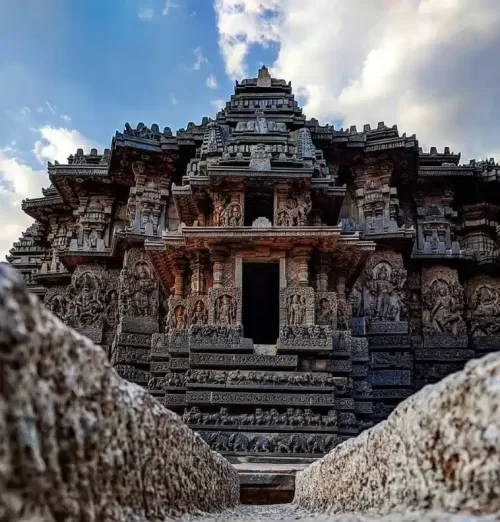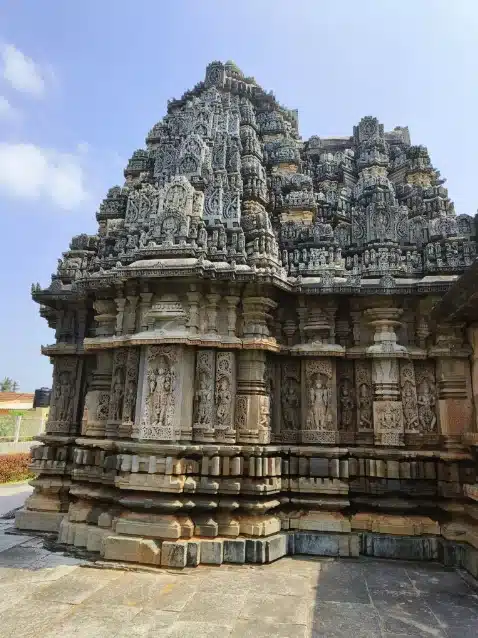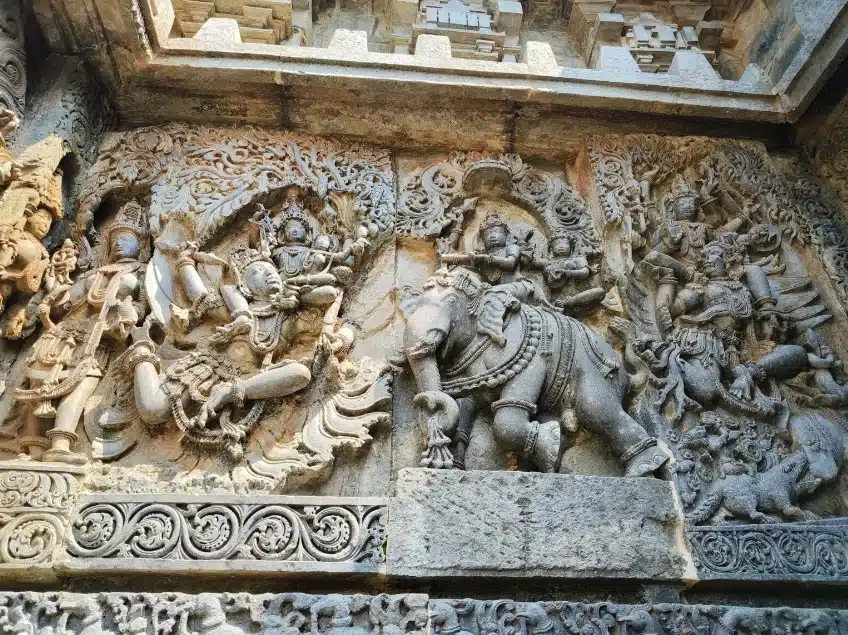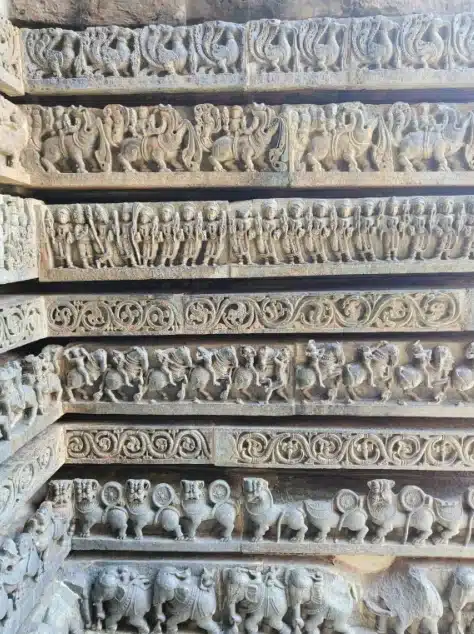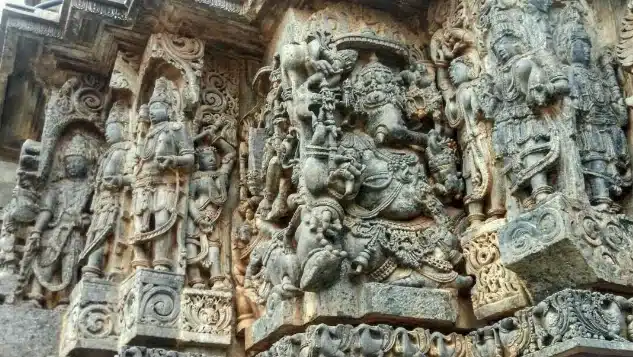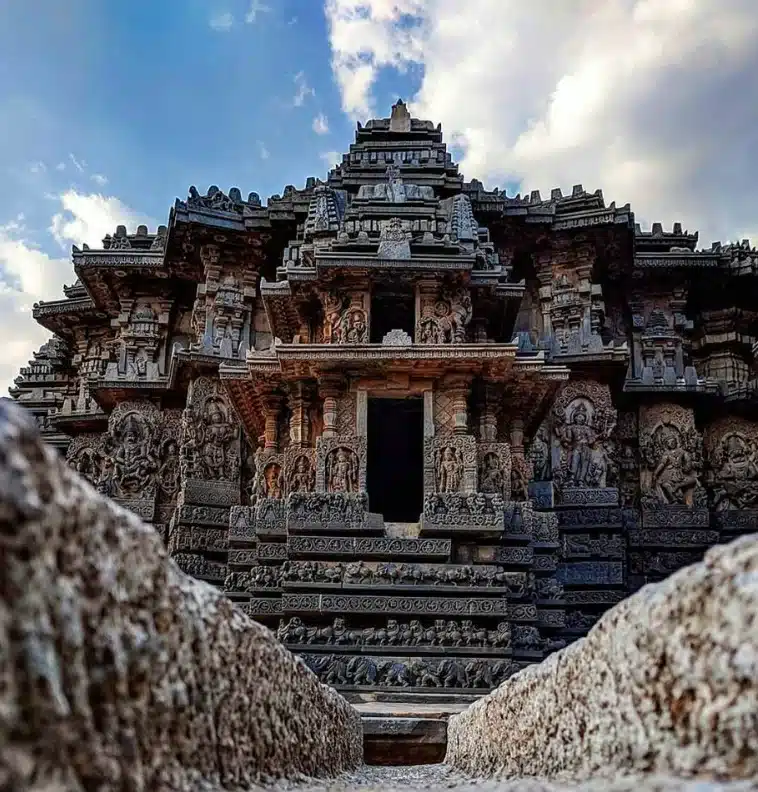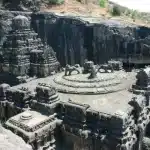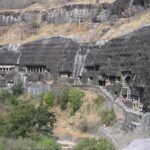Hoysala Temple Architecture
The temples built during the Hoysala dynasty in the Southern Karnataka (Mysuru) region fused Vesara and Dravidian architectural styles to create a unique style known as the Hoysala School of Art.
This style evolved between 1050 and 1300 AD. Well-known locations such as Somanathapura, Belur, and Halebidu feature these temple complexes, which are included in the preliminary UNESCO World Heritage Site list.
Notable attributes
The Hoysala temples were constructed on the elevated Jagati platform, which served as the Pradakshinapatha. The Stellate Plan, a platform shaped like a star, was the basis for these temples.
Soft soapstone, also known as chlorite schist, was the primary construction material. Elaborately carved statues adorned the temple’s exterior and internal walls, with intricate decorations even on the gods.
Shikharas were present in every temple room, connected by moldings and horizontal lines. The temple walls of the Hoysala Empire depicted incidents from the Hindu epics, including the Ramayana, Mahabharata, and Bhagavata Purana.
Throughout their reign, the Hoysalas erected many temples, but only around 92 still stand today, albeit in various states of disrepair. King Vishnuvardhana constructed major sites such as the Belur Chennakesava Temple.
While his minister Ketumalla erected Halebidu’s twin temples. Ketumalla, a devotee of Shiva, built the temple in honor of the King and Queen. The temple houses two Shivalingas: Hoysaleshwara, named after the King, and Shantaleshwara, named after the Queen.
Architectural Highlights of the Hoysaleshwara Temple
In Sanskrit, this pair of temples is called DWIKUTA. The Hoysalas constructed these temples, with Belur being Ekakuta (one temple) and Somanathapura being Trikuta (three temples).
The construction of this temple began in 1121 AD and lasted for almost 190 years. Halebidu, formerly known as Dwarasamudra, served as the Hoysalas’ capital.
The Delhi Sultanates raided and pillaged Halebidu twice in the fourteenth century, causing the temples to fall into ruin and neglect. They remained in this state until the Assailants of India noticed them after gaining independence.
If I were to give a quick description of the Hoysaleshwara temple’s distinctive architecture, I would mention the sculptures on its eastern side that caught my eye.
The eastern side of the temple features eleven lines of wall depictions. The first line consists of moving elephants, followed by lions in the second line, flower climbers in the third line, and horses in the fourth line.
These four lines of representation are thought to be significant because the King ought to possess each of these attributes.
Symbolism and Preservation of Hoysala Temple Architecture
Elephants stand for power, lions for bravery, horses for speed, and flower climbers for adornment. One of the eleven lines tells the tale of Samudra Manthana, while another depicts Makara, an imagined animal.
Makara combines the body of a pig, the legs of a lion, the mouth of a crocodile, the trunk of an elephant, the ears of a cow, the eyes of a monkey, and the tail of a peacock.
The renderings of the temple’s various themes each convey a tale about the existence of an empire. Every temple theme offers a moral lesson about life that still holds true today.
Hoysala Temple architecture is renowned for its beautiful sculptures on the temple’s external and interior walls. Every visitor to the imperial sites will have a singular experience appreciating the magnificent grandeur of the Hoysalas.
Travelers must dedicate themselves fully to understanding Hoysala architecture. The adornment of the Hoysalas temples reveals the empire’s wealth in architecture. Regretfully, the temples are heading toward ruin despite the efforts of governments and ASI.
Most old temples, not just those in the Hoysala kingdom, are in ruins. Therefore, every visitor has the responsibility to conserve our rich cultural legacy. Travel responsibly and take the time to learn about the past.
ALSO READ: Ellora Caves: An Architectural Masterpiece Carved in Stone
